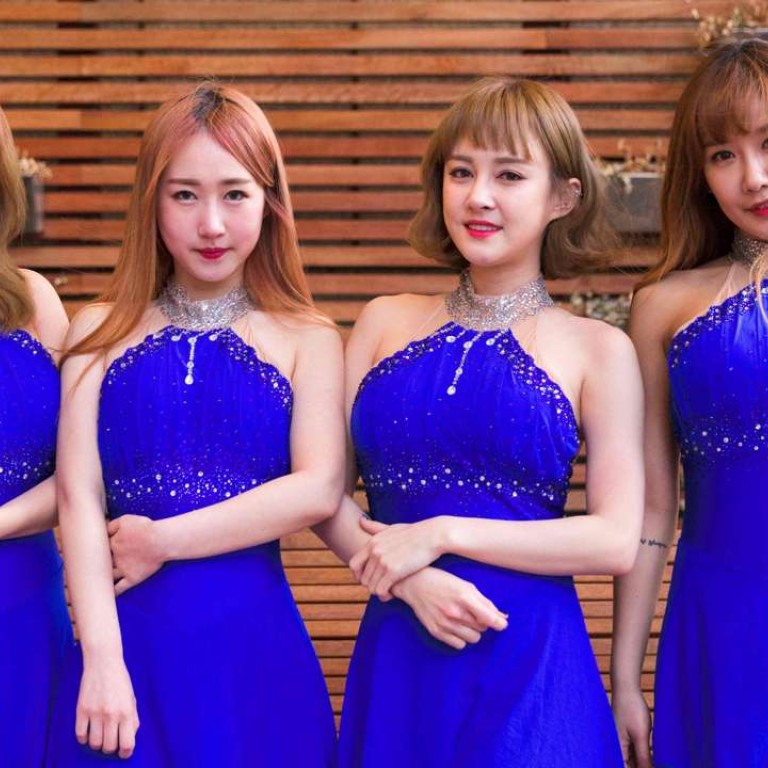
China’s cosmetic surgery boom doesn’t look pretty when it comes to profits
Industry players face intense price competition and lower profitability
China’s cosmetic surgery industry is expected to double in size over the next three years, fuelling intense competition among hospitals and suppliers to woo the growing number of mainlanders willing to change the way they look.
As plastic surgery hospitals and cosmetic filler makers increase marketing costs and stage a price war to attract customers, the industry’s profitability has fallen, while big players outpace smaller ones in growing market shares, according to a recent survey by HSBC based on phone interviews with 50 private hospitals and beauty salons in China.
“The pursuit of physical beauty had become big business in China,” HSBC analysts Zhijie Zhao and Esther Wen said in the report.
Cosmetic surgery is becoming more “socially acceptable”, they added.
More male customers and young people have jumped on the bandwagon to make themselves look prettier through dermal filler injections.
According to the 2016 Cosmetic Surgery Whitepaper published by Gengmei, a cosmetic surgery app with more than 15 million users in major Chinese cities, male consumers accounted for 21 per cent of procedures in 2016, up 4 per cent year on year.
The share of customers aged under 25 and over 35 increased from 31 per cent to 39 per cent of the whole population.
Given these changes in demographics, the stereotypes about cosmetic surgery – that it is only for women or movie stars – are fading.
“This is good news for the industry in a country where the average expenditure on skincare is more than double the global average,” said Zhao and Wen.
HSBC expects China’s cosmetic surgery industry to double in market size by 2019, reaching 800 billion yuan (US$116.3 billion), making it the third largest in the world behind the US and Japan.
However, while robust growth bodes well for industry players, a number of challenges remain.
The price competition has become more intense, as the burgeoning market attracts an increasing number of newcomers.
In China, more than 70 per cent of the plastic surgery hospitals are private and no single group has a market share above 5 per cent.
“In such a competitive market, customers have a great deal of bargaining power,” the HSBC analysts said.
In such a competitive market, customers have a great deal of bargaining power
Hyaluronic acid (HA) injection surgeries, which are extremely popular in China, have a low entry barrier and also low profit margins. The so-called HA injection surgery takes only one to two hours and has no wound or cut, meaning a rapid recovery for the patient.
This has led to a price war among plastic surgery hospitals and upstream manufacturers of dermal fillers, which has put pressure on the industry’s profitability.
The average net profit margin for plastic surgery hospitals is around 10 per cent, according to a recent research report by China Merchants Securities.
In the first half of 2016, the net profit margins of the three leading private plastic surgery hospitals on the mainland – Rongen, Lidu, and Huahan – fell year on year. Rongen’s net margin was 12 per cent, while Lidu and Huahan’s net margins were 6 per cent and 4 per cent respectively.
For other hospitals, HSBC estimated their average net margin is below 10 per cent, with some smaller players “struggling to break even” in the worst cases.
“In this difficult environment, hospitals are asking their suppliers to share the pain, exposing the
producers of HA dermal filler to the risk of facing similar margin pressures,” Zhao and Wen said.
According to the HSBC survey, all the major HA dermal filler producers – domestic and foreign – have cut their prices aggressively, with discounts ranging from 20 per cent to 60 per cent.

The survey showed five leading brands in the dermal filler industry have increased or maintained their market shares, including Juvederm, Restylane, and Yvoire, BioHyalux, and Matrifill.
The first three are all international, while the other two are mainland firms.
“The dominance of the market leaders confirms our belief that the real entry barrier to the HA filler market are branding power and customer loyalty, which take time to build,” the analysts said.
Among the foreign brands, Juvederm and Yvoire are making “significant progress”, they said.
The penetration rate of Juvederm in the surveyed hospitals, a product from US pharmaceutical company Allergan, had increased to 75 per cent by the end of March, compared with less than 30 per cent by July 2016.
Korean brand Yvoire has also expanded its distribution network, being carried by 48 mainland Chinese hospitals, up from 44 in July 2016.
“Juvederm has increased its marketing activities, while Yvoire has chosen to cut its prices to match domestic brands,” the analysts said.
The penetration rate for Restylane, produced by a Swedish firm Q-med, remains steady.
Meanwhile, domestic brands BioHyalux, made by Bloomage, and Matrifill, supplied by Haohai, have also slightly increased market shares despite pressure from foreign brands.

